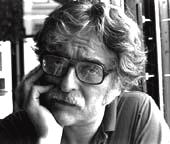Over the next two
issues, TDJ looks at newspaper, magazine and television photojournalism.
My newspaper work appeared there through the efforts of an agency.
My television work never left the studio. For me, that leaves magazines.
And that's exactly what you should do with newsmagazines. Leave them.
I know experienced photographers with good reputations and high overheads
(usually in the form of family) who are earning two to three hundred
dollars a day plus their direct expenses (essentially the popular
day rate of 25 years ago). Their assignments are short term and often
inconsequential. "Inconsequential," that means personally
boring and without any resale potential. Ooops, I forgot, a lot of
publications buy all rights for their pittance; so, there isn't even
resale income.
And equipment allowances, access to an equipment pool, office space,
camera insurance and medical insurance, all at one time offered to
non-staff contract photographers, are a thing of the past - as are
most contracts.
What's wrong with you? How can you allow yourself to be treated that
way? Leave!
There are specialized magazines, the communication and entertainment
industries, informative material - even material on important issues
for organizations concerned with those issues. These are venues that
use a relatively simple, direct form of photography and pay a reasonable
sum for it. Somewhere out there is a subject and a world that interests
you.
Photography, music, writing, performing, designing are nothing in
themselves. It's what you do with them. That's why so many people
became photojournalists. You could photograph something that was important,
maybe come to understand it a little. Maybe, you could even help other
people understand it.
Unless you have a very warped sense of what is important or will accept
being shot at for so little money that you can't afford medical insurance,
those days are gone. If you work for today's newsmagazines you'll
skim the surface with one day assignments.
Serious, big issue, important-to-you photojournalism is now a hobby
paid for by
other work. When it is very, very good, and you work very, very hard,
it may end up in a book or on the walls of an important gallery or
museum. But don't think you will make much money from books or exhibits.
You will, however, accomplish something of great importance to photojournalists,
documentary photographers and people who like pictures; you will help
stamp out conceptual crap.
At one time galleries and books were filled with pictorial images
that imitated painting. Then there was a period in which documentary
photography, including photojournalism, made inroads. Between "The
Family of Man" at the Museum of Modern Art and self-promotion
of magazines like Life, the public began to appreciate a straightforward,
documentary approach. Eventually the documentary bandwagon got a little
overloaded and some less than stellar work got a little overpromoted.
Inroads were made by conceptual artists, artists whose work is drawn
totally from themselves. Some of these folks like David Hockney, Jerry
Uelsmann and Robert Frank are brilliant. But most photographers who
give up the benefit of strong subject matter produce pictures that
suck. That's right, most of us need help.
On the other hand, galleries, museums and publishers need pictures
that are obviously "art." If a lower-level conceptual photograph
is totally pointless, perhaps even incomprehensible, it has to be
art. What else could
it be?
Don't think of yourself as an underpaid photojournalist. You are a
STARVING ARTIST, starving because you used to be a photojournalist.
Bill Pierce
Contributing Writer
bicpi@earthlink.net

